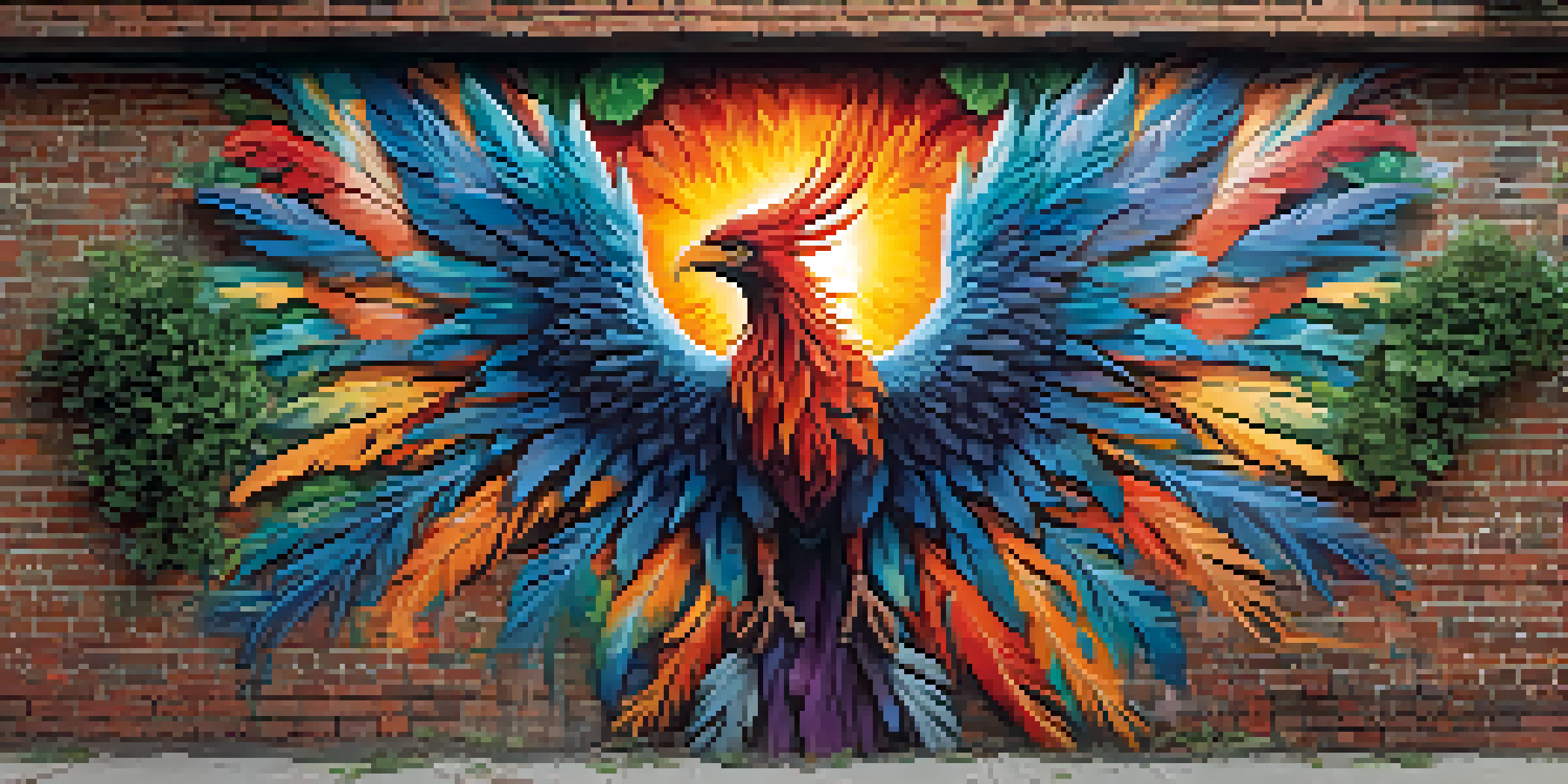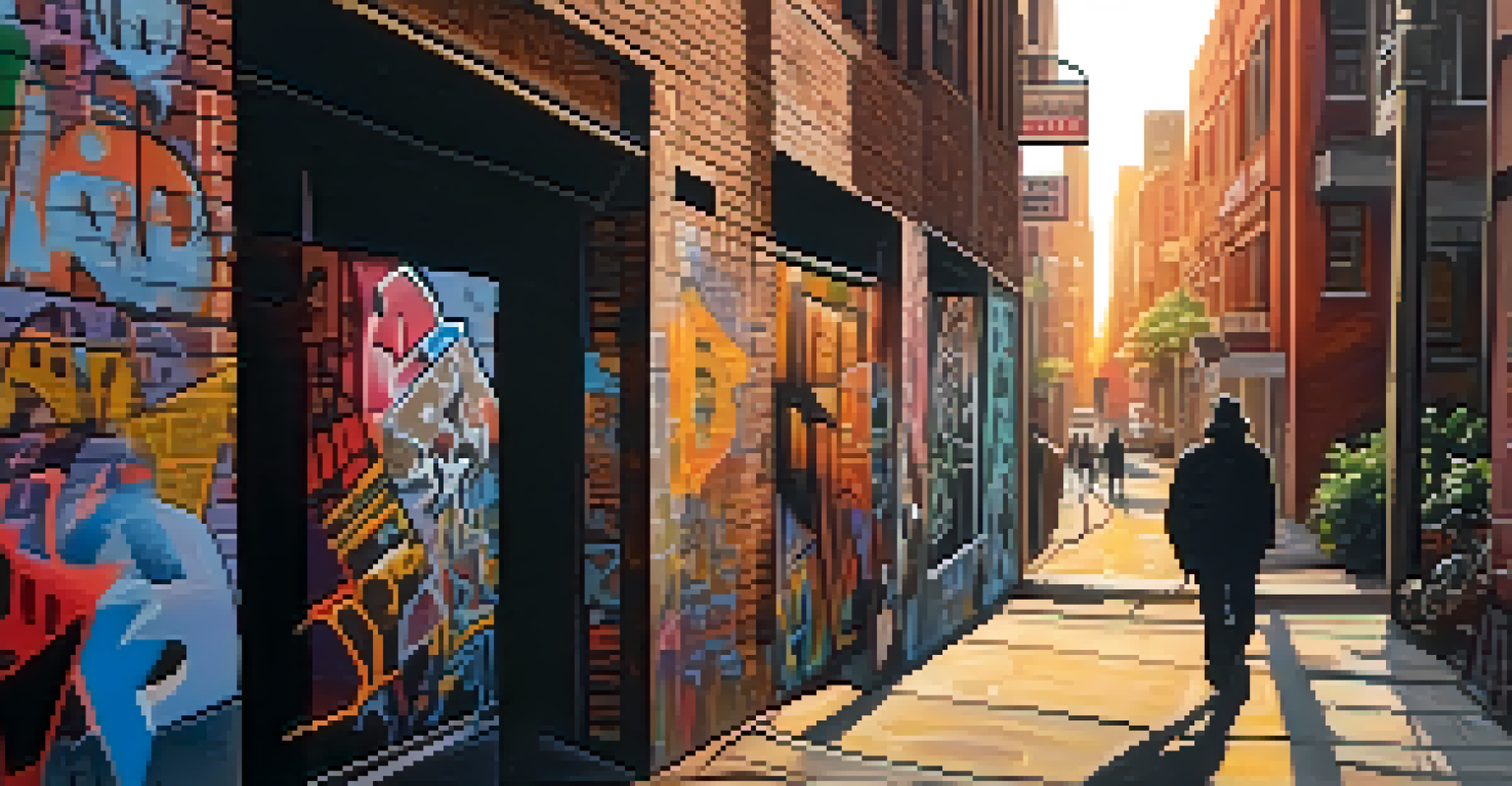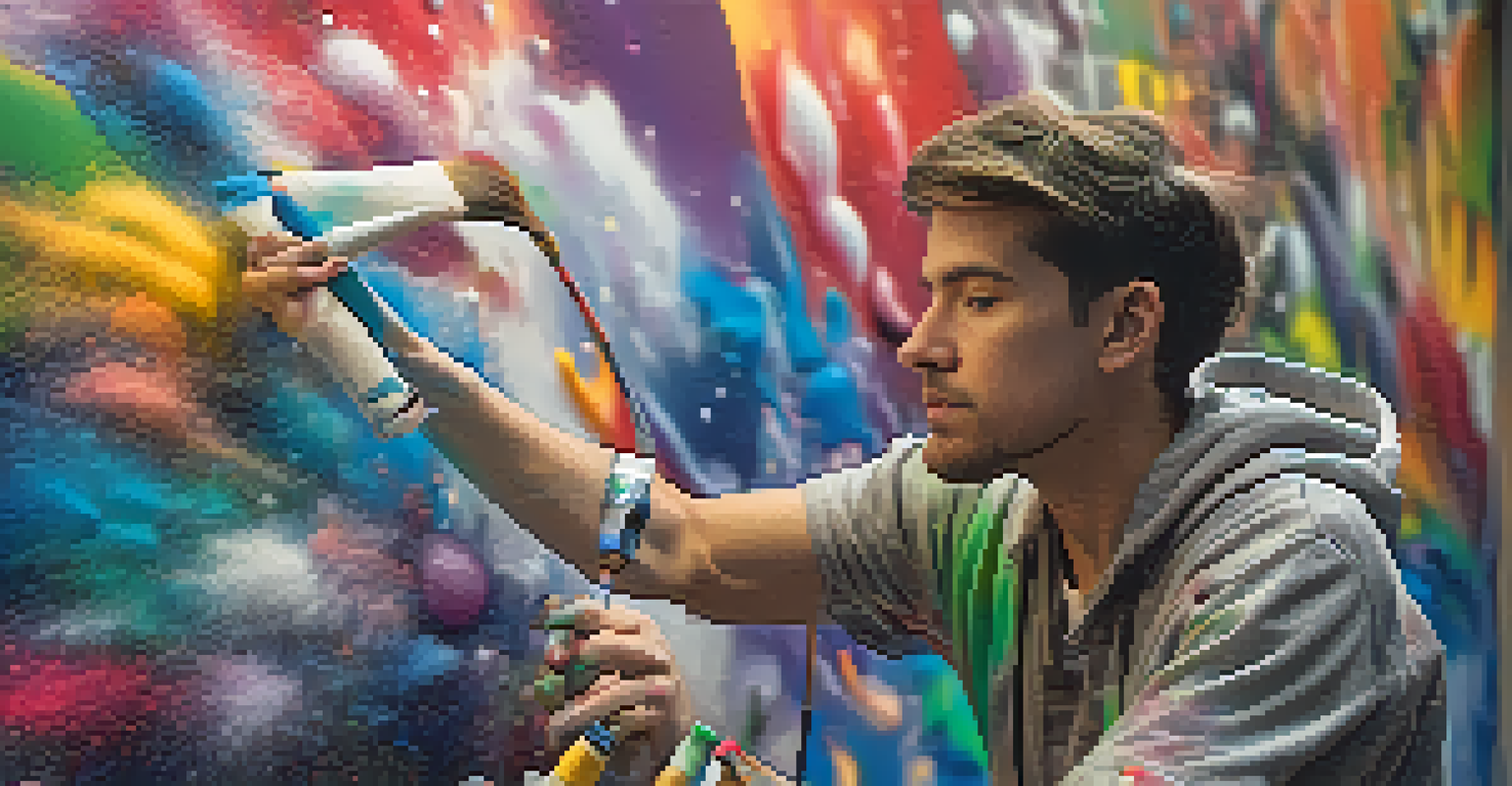Photographing Street Art: Capturing Ephemeral Moments

Understanding the Essence of Street Art
Street art is more than just visual expression; it's a reflection of culture, society, and transient emotions. Each piece tells a story, often rooted in the environment it inhabits. By understanding the motivations behind the artwork, photographers can capture not just the art but the deeper narratives that surround it.
Street art is a great way to express thoughts and feelings that we sometimes can't put into words.
Many street artists aim to provoke thought or evoke feelings, making the context crucial. For instance, a mural painted on a crumbling wall may symbolize decay or resilience. Recognizing these elements allows photographers to frame their shots in ways that highlight the art's significance and message.
Moreover, street art is inherently ephemeral; it can be altered or washed away at any moment. This impermanence adds a layer of urgency to capturing these moments, as each photograph becomes a preservation of a fleeting encounter with creativity.
Choosing the Right Time and Place
Timing is everything when it comes to photographing street art. Early mornings or late afternoons often provide the best natural light, enhancing the colors and textures of the artwork. Additionally, these times typically see fewer people around, allowing for clearer shots without distractions.

Finding the right location is equally important. Some neighborhoods are known for their vibrant street art scenes, making them prime spots for photography. Walking through these areas not only provides ample opportunities but also allows you to soak in the local vibe, which can inspire your shots.
Street Art Reflects Deeper Narratives
Understanding the cultural context behind street art allows photographers to capture its significance and underlying messages.
Consider the backdrop of your photographs as well. The surrounding environment can complement or contrast the artwork, adding depth to your images. A well-placed tree, a bustling street, or even an old building can enhance the storytelling aspect of your photographs.
Using the Right Equipment for Street Photography
While you don't need a high-end camera to capture stunning street art, having the right equipment can make a difference. A DSLR or mirrorless camera offers flexibility with settings, allowing you to adapt to changing light conditions. Alternatively, a smartphone with a good camera can also do the trick, especially with today's advanced technology.
The street is a canvas for the people, and art is a conversation starter.
Consider using a wide-angle lens to capture entire murals, or a zoom lens for closer shots that highlight intricate details. A tripod can be helpful for stability, especially in low light or when shooting long exposures, but be cautious in crowded spaces.
Remember, the best camera is the one you have on you. Whether it’s a smartphone or a professional camera, your creativity and perspective are what ultimately bring the art to life in your photographs.
Mastering Composition Techniques
Composition is key to creating engaging photographs of street art. The rule of thirds is a classic technique that helps balance your images, guiding the viewer's eye through the photograph. By placing the subject off-center, you can create a more dynamic composition.
Don’t shy away from experimenting with different angles and perspectives. Shooting from a low angle can give the artwork a towering presence, while a high vantage point might reveal the piece's relationship with its surroundings. These variations can add a unique touch to your portfolio.
Timing and Location Matter
Choosing the right time and place for photography enhances the visual appeal and storytelling of street art.
Additionally, leading lines and framing elements can enhance your composition. Use natural lines in the environment, such as roads or fences, to draw attention to the art, creating a visual pathway that guides the viewer's gaze.
Capturing the Emotion Behind the Art
Photographing street art is not just about the visuals; it’s also about conveying emotion. Pay attention to the feelings that the artwork evokes in you and try to capture that essence in your shots. This emotional connection can resonate with viewers and make your photographs more impactful.
Look for the interactions between the art and its surroundings. People posing, walking by, or even reacting to the piece can add layers of meaning to your photographs. Capturing these candid moments can help tell a richer story about the artwork and its place in the community.
Remember, street art often reflects societal issues, personal struggles, or cultural heritage. By conveying these themes through your photography, you can invite viewers to engage with the artwork on a deeper level.
Editing Your Street Art Photos
Post-processing is where you can really enhance your street art photographs. Simple adjustments like brightness, contrast, and saturation can make a significant difference. Highlighting the vibrant colors typical of street art can breathe new life into your images.
Consider using software like Adobe Lightroom or even mobile apps to edit your photos. These tools allow you to fine-tune your images without compromising their authenticity. Just remember to maintain a natural look; over-editing can detract from the raw beauty of the artwork.
Editing Enhances Visual Impact
Post-processing techniques can significantly improve street art photographs, highlighting their vibrant colors and details.
Also, don’t forget to crop strategically. This can help eliminate distractions and bring focus to the art itself. A well-cropped image can transform an average photo into a striking visual, making it stand out in your portfolio.
Sharing Your Street Art Photography
Once you've captured and edited your street art photographs, it's time to share them with the world. Social media platforms like Instagram and Pinterest are excellent for showcasing your work, allowing you to connect with fellow art lovers and photographers. Use relevant hashtags to reach a broader audience and engage with the street art community.
Consider creating a dedicated portfolio website to present your best work. This can serve as a visual resume and attract potential clients or collaborations. Showcasing your photography alongside information about the artists or the stories behind the pieces can add depth to your portfolio.

Lastly, don’t hesitate to reach out to local galleries or art organizations. They might be interested in featuring your work or collaborating on projects. Networking within the community can lead to exciting opportunities and help you grow as a photographer.